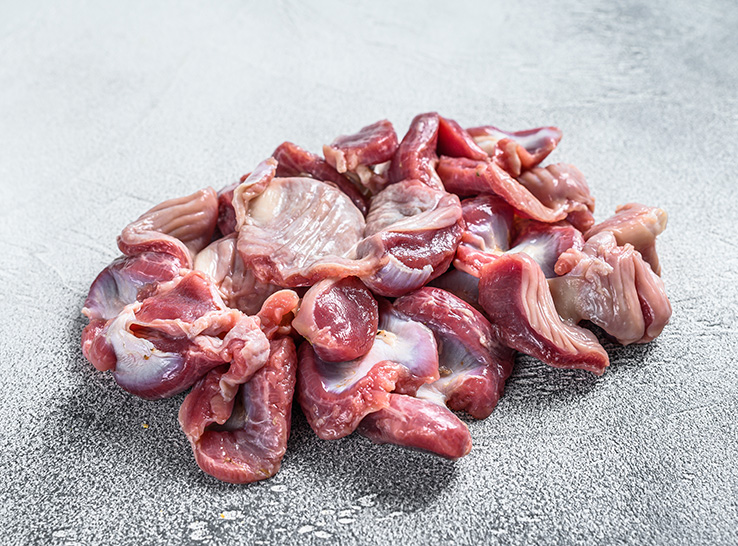Levels of copper in broiler diets may be contributing to an increased incidence of gizzard lesions in the southeastern US.
Gizzard lesions are normally low in prevalence and severity, but posting sessions have revealed an uptick in cases.
They are often associated with the presence of the bacterium Clostridium perfringens, Matthew Jones, DVM, PhD, Southern Poultry Research Group Inc., reported at the American Association of Avian Pathologists 2023 conference.
In response, a research team set up a pen trial to try to experimentally induce similar lesions. In the first phase, investigators administered non-medicated feed, tribasic copper chloride (TBCC) or copper sulphate to groups of 25 male Ross broilers. On days 21 and 22, they orally gavaged C. perfringens to the birds, which had been sourced from a field sampling of a gizzard-erosion case. Lesions were scored on a scale of 0 to 3.
In a second part of the testing, the scientists used an unchallenged control, a challenged control and a challenged control with TBCC. Besides scoring lesions, investigators took gizzard and ceca samples to examine C. perfringens prevalence.
Health and welfare implications
The researchers found that the birds which received both C. perfringens and TBCC had more lesions. They also observed defects in the koilin membrane of the gizzard. Despite the presence of the lesions, the scientists saw no related impact on performance.
Overall, the study showed that dietary copper at high-normal levels could be contributing to the lesions being observed in the field, while the fact that the methods used by the team resulted in lesions and varied C. perfringens colonization, depending on treatment, proved their worth as an experimental technique.
“Erosions and ulcerations of the gastrointestinal tract may make the process of eating more painful in addition to contributing to general malaise which could impact feed consumption. Breaches of the gastrointestinal wall also has implications for potential bacteremic or septicemic events. Neither of these are good for the health and well-being of the animal,” Jones said.
“Hopefully, as a community we can work toward better understanding the pathogenesis and health implications of gizzard erosion and ulceration.”




